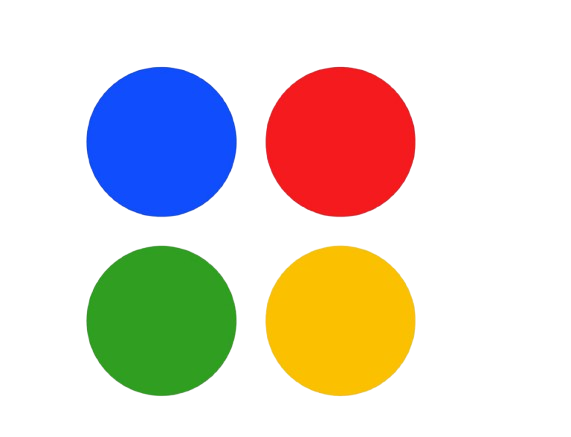Orlando isn’t just about theme parks. It’s also home to fast-moving industries in healthcare, tourism, logistics, and professional services. Many of these companies are now dealing with tighter margins, rising customer expectations, and a growing need for around-the-clock service. That’s why automation has become a big talking point.
But not all automation is created equal. Some systems follow rules like a checklist. Others think, adjust, and even make decisions on their own. These are called AI agents.
Understanding the difference between traditional automation and AI agents helps Orlando businesses choose the right tool for the job. This blog will explain how both systems work, where each one fits best, and what to consider when deciding which one to use.
What Is Traditional Automation? (And Why It’s Not Dead Yet)
Traditional automation uses fixed instructions to do simple, repetitive tasks. These include:
- Auto-filling forms
- Sending pre-written emails
- Scheduling meetings
- Flagging duplicate entries
In Orlando offices, traditional tools might help HR teams process onboarding paperwork or help hotels manage bookings. This kind of automation is dependable, cost-effective, and fast—as long as the process doesn’t change.
However, it has limits. If something unexpected happens, like a customer entering data incorrectly or asking a complex question, the system usually fails or passes it to a human.
In our breakdown of AI agents in modern workflows, we looked at how traditional systems still play a role. But in many workflows today, more flexibility is needed.
What Are AI Agents (and How Are They Different)?
AI agents are more advanced. They don’t just follow orders. They understand goals, respond to changes, and take action based on what’s happening.
For example, in a tourism company, an AI agent might analyze customer inquiries, spot urgent requests, and change its response tone automatically. In logistics, it might reroute a delivery after checking traffic or weather in real time.
As we covered in the Fairfield guide, more businesses are turning to systems that can work with context, not just code. These agents think more like humans, making them a better fit for complex or fast-changing environments.
Head-to-Head: Key Differences That Affect Your Business
Let’s compare traditional automation and AI agents based on how they actually work:
| Feature | Traditional Automation | AI Agents |
| Setup | Rule-based scripts | Goal-based intelligence |
| Flexibility | Low | High |
| Adaptability | Cannot react to change | Learns and adjusts |
| Input Type | Structured only | Structured + unstructured (text, voice, sensor data) |
| Human-Like Decisions | No | Yes (to a point) |
This flexibility makes a big difference. A chatbot running on rules can only answer exact questions. But an AI agent in customer service might detect emotion, escalate issues, and even update internal records.
Use Case Scenarios: Which Tool Works Best for What?
Traditional automation works best when:
- The task is always the same (e.g. sending invoices)
- The rules never change
- You need something easy to deploy fast
AI agents are the better fit when:
- You deal with human behavior (e.g. support tickets, online orders)
- Tasks change based on the situation
- You want systems to learn and improve over time
Let’s say your Orlando clinic needs a system for appointment booking. Traditional tools can handle slots and confirmations. But if patients cancel, reschedule, or ask questions, you’ll need agents trained to adjust in real time.
This is why training AI agents matters. They’re powerful, but only when they’re built with the right context.
Cost, Maintenance, and Learning Curve: What to Expect
Traditional automation:
- Easier to set up
- Minimal maintenance
- Less training needed
- Lower short-term cost
AI agents:
- Require more setup time and data
- Need ongoing training and tuning
- Offer better long-term returns
Choosing between the two isn’t just about price. It’s about understanding total value. Many teams don’t count the cost of constantly fixing outdated workflows or manually filling in gaps.
Real Orlando Use Cases: From Tourism to Tech
Let’s look at how Orlando businesses are using both tools right now:
- A hotel uses traditional automation for check-in kiosks, while AI agents manage guest feedback and suggest upsells.
- A logistics company uses AI to adjust delivery routes based on traffic and weather, while traditional systems handle barcode scans.
- A healthcare group automates claims processing, but uses agents to screen patient inquiries for urgency.
This layered approach works well because no single tool fits every need. Teams build hybrid workflows based on task complexity.
As explored in how AI agents improve operations, pairing the two often leads to stronger performance and happier staff.
Future-Proofing: Why Thinking Long-Term Matters
Workflows are evolving. What works today might not work tomorrow. That’s why companies are shifting to tools that can evolve with them.
AI agents are designed to scale. If your business grows, the agent learns and adapts. Traditional tools often need to be rebuilt when conditions change.
In our dive into future agent evolution, we saw how these systems will begin to collaborate, make decisions together, and even assist with strategy.
If you want tech that grows with you, agents are the safer long-term bet.
Decision-Making Guide: A Simple Framework for Orlando Teams
Here’s a basic checklist to help you decide:
- Is the task predictable? → Use traditional automation
- Does the task involve judgment, text, or behavior? → Use an AI agent
- Do you have clean data? → AI agents work better with solid inputs
- Is time-to-launch more important than adaptability? → Start with automation
- Do you want future scalability? → Plan for agents now
Most teams will use a mix. The best approach is to start small, test one agent-based task, and build from there.
Final Thoughts: There’s No One-Size-Fits-All
The choice between traditional automation and AI agents isn’t about right or wrong. It’s about using the right tool at the right time.
Automation still plays a strong role in Orlando industries. But for teams looking to stay agile, handle complexity, and improve over time, AI agents are becoming essential.
Understanding how these systems work—and where they fit—is the first step to building smarter workflows that help your team do more with less.

